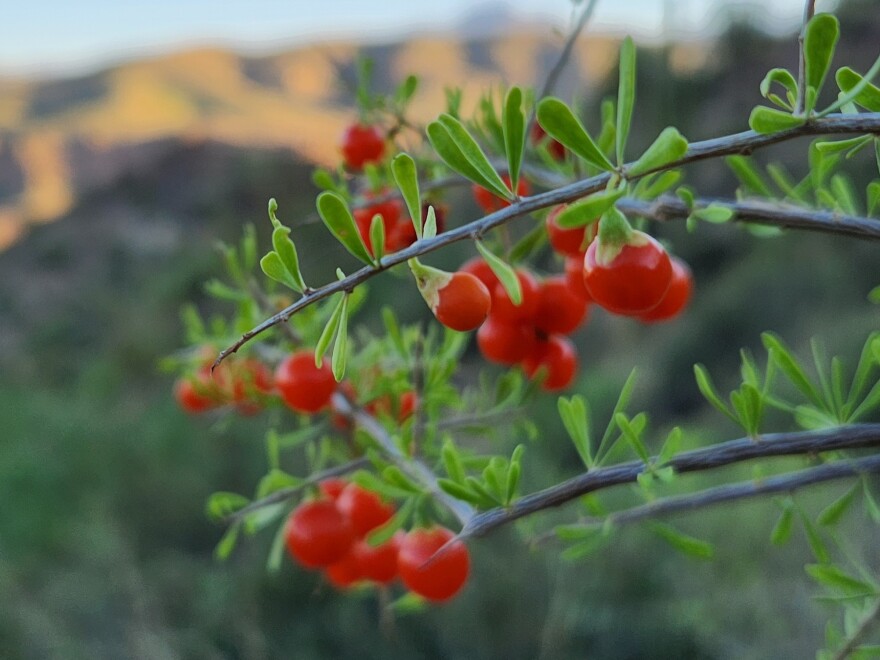I set off half an hour before sunrise up the rocky trail. It was chilly in the predawn light, with just enough glow in the sky that I could see cactus spreading in every direction and big mesas of rock.
After months of temperatures above 100 degrees Fahrenheit, it's finally cooling off in Arizona's Sonoran Desert. I decided to take advantage of the milder weather to trek into the Superstition Wilderness, a 140,000 acre expanse in the mountains east of Phoenix.

The first part of my hike, I startled a herd of mule deer. They scattered among the saguaro, their white tails flashing. In the dim light there were birds everywhere.
Using trekking poles, I picked my way over scree slopes and rocky trails. Minute by minute, the morning sun repainted the world.
First the vast orange cliffs above caught the light. Then bright red berries and finally big sweeps of lush buttery yellow flowers.

Soon I came to a stage of high rock that looked out across the dry river valley to the distant mountains, so craggy, so knife-edged, they seemed unreal.
If you saw this painting in a museum, you'd think some early painter of the Old West had let their imagination run wild.
I hiked on, dropping down steep trails into the valley where I could see a vein of bright green forest surrounded by the desert.

Hour by hour, the heat rose. The climbing sun scattered the last of the shade. I pulled on my sunhat and stopped often to drink.
Finally, I reached the bottom of the valley where I hopped and scrambled over round river stones. In the midst of the desert, I found what felt like a secret forest.
So far as I could tell, I had the vast valley to myself. For a long time I just sat under a shimmering tree, no cell service, no voices, just silence.

When I finally started for home, it was hot — not the 110-degree Fahrenheit temperature of high summer, but well into the 90s F. As I climbed, the trail smelled of dust and sage and my own sweat.
By late afternoon, I made it back onto one of the high buttresses of rock that sit above the valley, where I could take in a last view of the vast emptiness and magnificent solitude.
Copyright 2023 NPR. To see more, visit https://www.npr.org.






